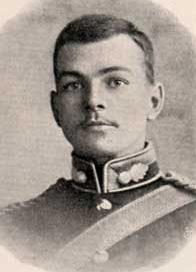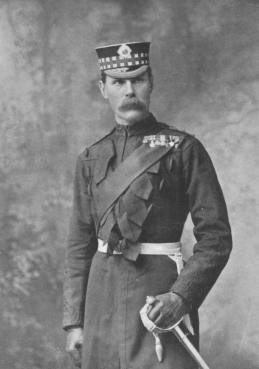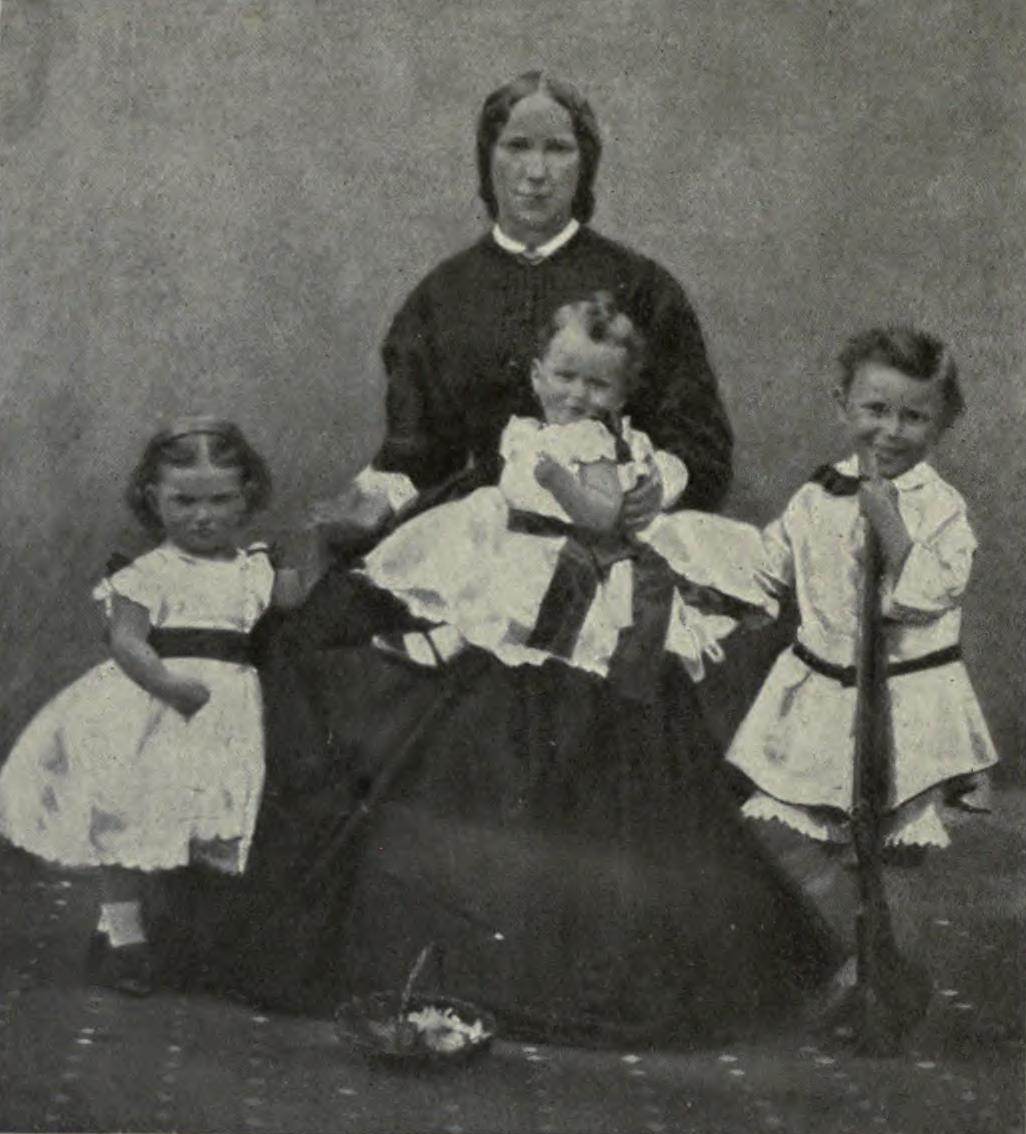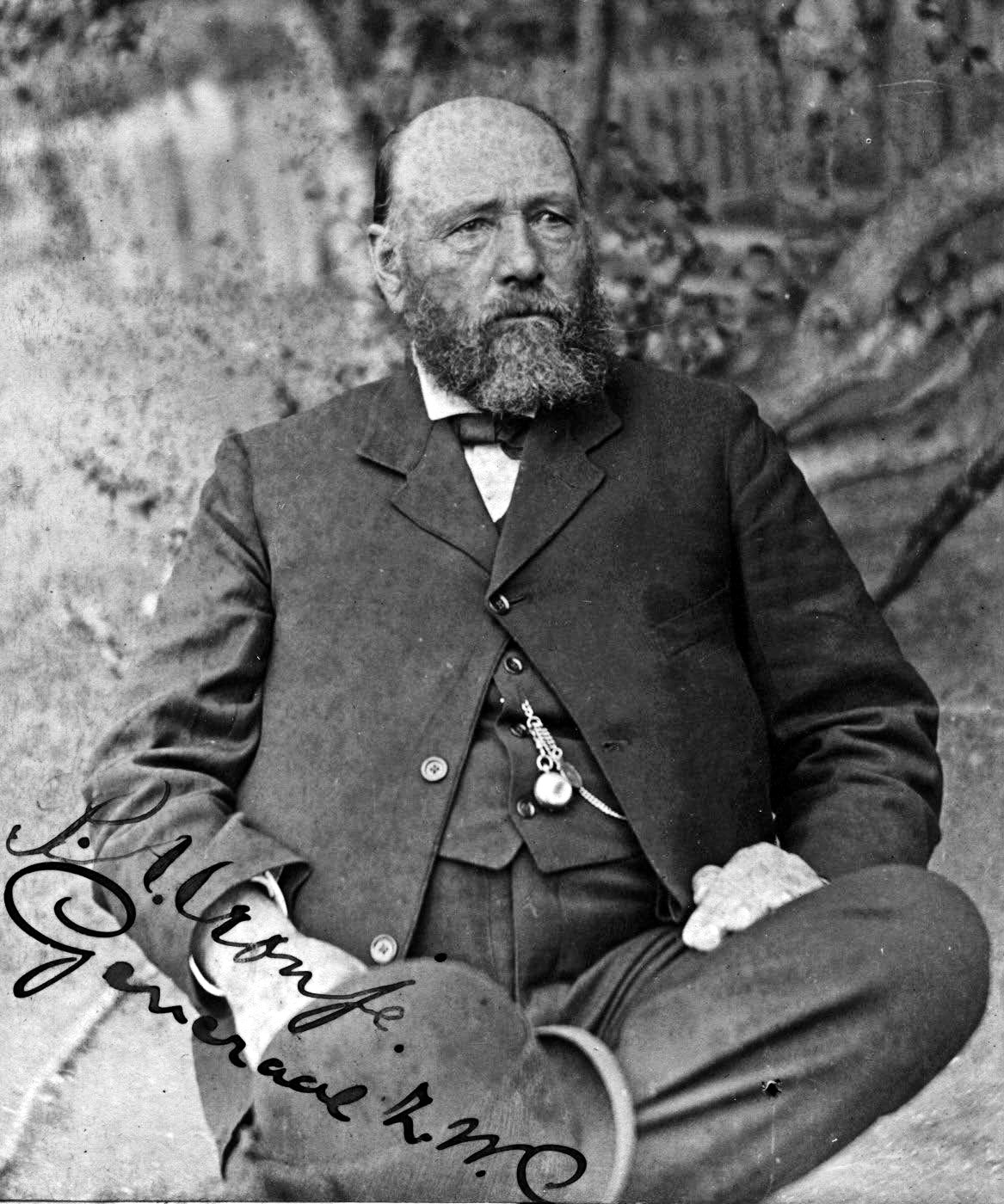|
Battle Of Tweebosch
In the Battle of Tweebosch or De Klipdrift on 7 March 1902, a Boer commando led by Koos de la Rey defeated a British column under the command of Lieutenant General Lord Methuen during the final months of the Second Boer War. Background In order to trap the Boer guerrillas in the Orange Free State, Lord Kitchener built lines of blockhouses connected with barbed wire. But there was not enough water in the Western Transvaal to employ the blockhouse system. Instead, he unleashed nine columns to hunt down De la Rey and the other Boer commanders in the area. On 24 February 1902, De la Rey pounced on a wagon convoy commanded by Lieutenant Colonel S. B. Von Donop. For the loss of 51 Boers, De la Rey killed, wounded or captured 12 officers and 369 men.Pakenham, p 583 In response, Methuen tried to track the Boer leader down. Battle Less than two weeks later, De la Rey ambushed Methuen's column at Tweebosch on the Little Harts River. The British force numbered 1250, including nearly 1000 ... [...More Info...] [...Related Items...] OR: [Wikipedia] [Google] [Baidu] |
Richard Caton Woodville
Richard Caton Woodville (30 April 1825 – 13 August 1855) was an American artist from Baltimore who spent his professional career in Europe, after studying in Düsseldorf under the direction of Karl Ferdinand Sohn. He died of an overdose of morphine in London at the age of 30. He was the father of Richard Caton Woodville Jr., also a noted artist. In his short career he produced fewer than 20 paintings; but they were well known in their time through exhibition and prints and have remained prominent in the canon of American painters. Early life and training Woodville was the eldest son born to a prominent Baltimore family. He displayed early promise in caricatures of his teachers. He attended the University of Maryland Medical School for one year. Woodville would likely have been exposed to the expansive private collection of Baltimore art collector Robert Gilmor Jr.Elizabeth Johns and Paul Usherwood"Woodville."''Grove Art Online. Oxford Art Online.'' 17 Jul. 2011 In 1845 Wood ... [...More Info...] [...Related Items...] OR: [Wikipedia] [Google] [Baidu] |
Second Boer War
The Second Boer War ( af, Tweede Vryheidsoorlog, , 11 October 189931 May 1902), also known as the Boer War, the Anglo–Boer War, or the South African War, was a conflict fought between the British Empire and the two Boer Republics (the South African Republic and the Orange Free State) over the Empire's influence in Southern Africa from 1899 to 1902. Following the discovery of gold deposits in the Boer republics, there was a large influx of "foreigners", mostly British from the Cape Colony. They were not permitted to have a vote, and were regarded as "unwelcome visitors", invaders, and they protested to the British authorities in the Cape. Negotiations failed and, in the opening stages of the war, the Boers launched successful attacks against British outposts before being pushed back by imperial reinforcements. Though the British swiftly occupied the Boer republics, numerous Boers refused to accept defeat and engaged in guerrilla warfare. Eventually, British scorched eart ... [...More Info...] [...Related Items...] OR: [Wikipedia] [Google] [Baidu] |
South African Republic
The South African Republic ( nl, Zuid-Afrikaansche Republiek, abbreviated ZAR; af, Suid-Afrikaanse Republiek), also known as the Transvaal Republic, was an independent Boer Republic in Southern Africa which existed from 1852 to 1902, when it was annexed into the British Empire as a result of the Second Boer War. The ZAR was established as a result of the 1852 Sand River Convention, in which the Government of the United Kingdom, British government agreed to formally recognise independence of the Boers living north of the Vaal River. Relations between the ZAR and Britain started to deteriorate after the British Cape Colony expanded into the Southern African interior, eventually leading to the outbreak of the First Boer War between the two nations. The Boer victory confirmed the ZAR's independence; however, Anglo-ZAR tensions soon flared up again over various diplomatic issues. In 1899, war again broke out between Britain and the ZAR, which was swiftly occupied by the British mil ... [...More Info...] [...Related Items...] OR: [Wikipedia] [Google] [Baidu] |
Paul Methuen, 3rd Baron Methuen
Field Marshal Paul Sanford Methuen, 3rd Baron Methuen, (1 September 1845 – 30 October 1932) was a British Army officer. He served in the Third Anglo-Ashanti War in 1873 and then in the expedition of Sir Charles Warren to Bechuanaland in the mid-1880s. He took a prominent role as General Officer Commanding the 1st Division in the Second Boer War. He suffered a serious defeat at the Battle of Magersfontein, during which he failed to carry out adequate reconnaissance and accordingly his artillery bombarded the wrong place leading to the Highland Brigade taking heavy casualties. He was later captured by the Boers at Tweebosch. After the war, he became General Officer Commanding-in-Chief in South Africa in 1908, Governor and Commander-in-Chief of Natal in 1910 and then Governor and Commander-in-Chief of Malta in 1915. Early life Paul Sanford Methuen was born at Corsham Court, Wiltshire, the eldest of three sons of Frederick Methuen, 2nd Baron Methuen and his wife Anna Horati ... [...More Info...] [...Related Items...] OR: [Wikipedia] [Google] [Baidu] |
Koos De La Rey
Jacobus Herculaas de la Rey (22 October 1847 – 15 September 1914), better known as Koos de la Rey, was a South African military officer who served as a Boer general during the Second Boer War. also had a political career and was one of the leading advocates of Boer independence. Early life Born on Doornfontein Farm in the Winburg District of the Orange Free State, Koos was the son of Adrianus Johannes Gijsbertus de la Rey and Adriana Wilhelmina van Rooyen. was a Boer of French Huguenot, Spanish and Dutch descent. His grandfather, a school teacher and the patriarch of the family in South Africa, came from Utrecht, Netherlands. After the Battle of Boomplaats, the family farm was confiscated by the British and the family trekked into the Transvaal and settled in Lichtenburg. As a child received very little formal education. The De la Rey family moved, this time to Kimberley after the discovery of diamonds. As a young man, de la Rey worked as a transport rider on the routes ... [...More Info...] [...Related Items...] OR: [Wikipedia] [Google] [Baidu] |
Orange Free State
The Orange Free State ( nl, Oranje Vrijstaat; af, Oranje-Vrystaat;) was an independent Boer sovereign republic under British suzerainty in Southern Africa during the second half of the 19th century, which ceased to exist after it was defeated and surrendered to the British Empire at the end of the Second Boer War in 1902. It is one of the three historical precursors to the present-day Free State province. Extending between the Orange and Vaal rivers, its borders were determined by the United Kingdom of Great Britain and Ireland in 1848 when the region was proclaimed as the Orange River Sovereignty, with a British Resident based in Bloemfontein. Bloemfontein and the southern parts of the Sovereignty had previously been settled by Griqua and by '' Trekboere'' from the Cape Colony. The ''Voortrekker'' Republic of Natalia, founded in 1837, administered the northern part of the territory through a ''landdrost'' based at Winburg. This northern area was later in federation wi ... [...More Info...] [...Related Items...] OR: [Wikipedia] [Google] [Baidu] |
Herbert Kitchener
Horatio Herbert Kitchener, 1st Earl Kitchener, (; 24 June 1850 – 5 June 1916) was a senior British Army officer and colonial administrator. Kitchener came to prominence for his imperial campaigns, his scorched earth policy against the Boers, his expansion of Frederick Roberts, 1st Earl Roberts, Lord Roberts' Second Boer War concentration camps, concentration camps during the Second Boer War and his central role in the early part of the First World War. Kitchener was credited in 1898 for having won the Battle of Omdurman and securing control of the Sudan for which he was ennoblement, made Baron Kitchener territorial designation, of Khartoum. As Chief of Staff (1900–1902) in the Second Boer War he played a key role in Roberts' conquest of the Boer Republics, then succeeded Roberts as commander-in-chief – by which time Boer forces had taken to guerrilla fighting and British forces imprisoned Boer civilians in British concentration camps, concentration camps. His term as C ... [...More Info...] [...Related Items...] OR: [Wikipedia] [Google] [Baidu] |
Lieutenant Nesham
A lieutenant ( , ; abbreviated Lt., Lt, LT, Lieut and similar) is a commissioned officer rank in the armed forces of many nations. The meaning of lieutenant differs in different militaries (see comparative military ranks), but it is often subdivided into senior (first lieutenant) and junior (second lieutenant and even third lieutenant) ranks. In navies, it is often equivalent to the army rank of captain; it may also indicate a particular post rather than a rank. The rank is also used in fire services, emergency medical services, security services and police forces. Lieutenant may also appear as part of a title used in various other organisations with a codified command structure. It often designates someone who is "second-in-command", and as such, may precede the name of the rank directly above it. For example, a "lieutenant master" is likely to be second-in-command to the "master" in an organisation using both ranks. Political uses include lieutenant governor in various gov ... [...More Info...] [...Related Items...] OR: [Wikipedia] [Google] [Baidu] |
Court-martial
A court-martial or court martial (plural ''courts-martial'' or ''courts martial'', as "martial" is a postpositive adjective) is a military court or a trial conducted in such a court. A court-martial is empowered to determine the guilt of members of the armed forces subject to military law, and, if the defendant is found guilty, to decide upon punishment. In addition, courts-martial may be used to try prisoners of war for war crimes. The Geneva Conventions require that POWs who are on trial for war crimes be subject to the same procedures as would be the holding military's own forces. Finally, courts-martial can be convened for other purposes, such as dealing with violations of martial law, and can involve civilian defendants. Most navies have a standard court-martial which convenes whenever a ship is lost; this does not presume that the captain is suspected of wrongdoing, but merely that the circumstances surrounding the loss of the ship be made part of the official record. M ... [...More Info...] [...Related Items...] OR: [Wikipedia] [Google] [Baidu] |
Ian Standish Monteith Hamilton
Sir Ian Standish Monteith Hamilton, (16 January 1853 – 12 October 1947) was a British Army general who had an extensive British Imperial military career in the Victorian and Edwardian eras. Hamilton was twice recommended for the Victoria Cross, but on the first occasion was considered too young, and on the second too senior. He was wounded in action at the Battle of Majuba during the First Boer War, which rendered his left hand permanently injured. Near the end of his career, he commanded the Mediterranean Expeditionary Force in the Gallipoli Campaign of the First World War. Early life Hamilton's father was Colonel Christian Monteith Hamilton, former commanding officer of the 92nd Highlanders. His mother Corinna was the daughter of the 3rd Viscount Gort. His mother died giving birth to his brother, Vereker, who became a well-known artist. Hamilton received his early formal education at Wellington College, Berkshire. His father then sent him to stay with General Drammers, a ... [...More Info...] [...Related Items...] OR: [Wikipedia] [Google] [Baidu] |
Battle Of Rooiwal
The Battle of Rooiwal was an engagement of the Second Boer War. It took place on 11 April 1902 and resulted in a victory by a British force commanded by Colonel Robert Kekewich over a Boer commando led by Generals Ferdinandus Jacobus Potgieter and Jan Kemp. The action consisted of a Boer attack on horseback on an entrenched British hillside position in the valley of Rooiwal, near Klerksdorp in the Western Transvaal. The Boers were attempting to break out of a British encircling manoeuvre. Their attack was repulsed at some cost to the Boers in killed and injured. This was the end of the war in the Western Transvaal and also the last major battle of the Anglo-Boer War. Background - the war in the Western Transvaal By 1902, there were roughly 3,000 Boer guerrillas operating in Western Transvaal. There were three separate Boer commandos under the overall command of De La Rey. By this time, many Boer fighters had surrendered and some were now working for the British as scouts. Th ... [...More Info...] [...Related Items...] OR: [Wikipedia] [Google] [Baidu] |
Battle Of Magersfontein
The Battle of MagersfonteinSpelt incorrectly in various English texts as "Majersfontein", "Maaghersfontein" and "Maagersfontein". ( ) was fought on 11 December 1899, at Magersfontein, near Kimberley, South Africa, on the borders of the Cape Colony and the independent republic of the Orange Free State. British forces under Lieutenant General Lord Methuen were advancing north along the railway line from the Cape to relieve the siege of Kimberley, but their path was blocked at Magersfontein by a Boer force that was entrenched in the surrounding hills. The British had already fought a series of battles with the Boers, most recently at Modder River, where the advance was temporarily halted. Lord Methuen failed to perform adequate reconnaissance in preparation for the impending battle and was unaware that Boer ''Vecht-generaal'' (Combat General) De la Rey had entrenched his forces at the foot of the hills, rather than the forward slopes, as was the accepted practice. That allowed t ... [...More Info...] [...Related Items...] OR: [Wikipedia] [Google] [Baidu] |








